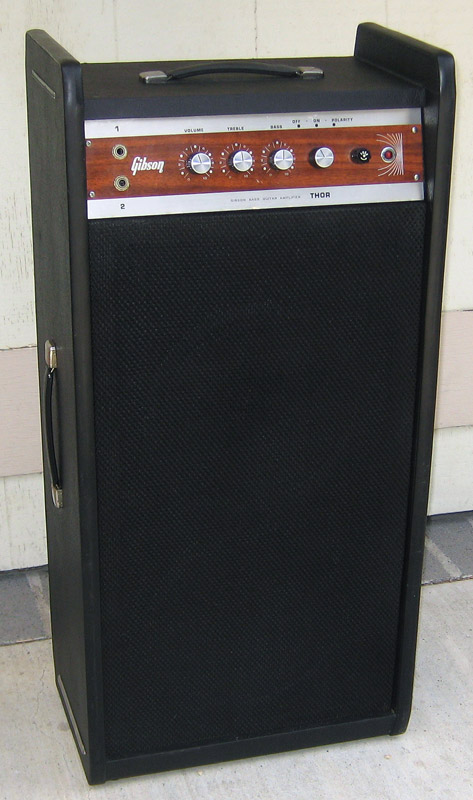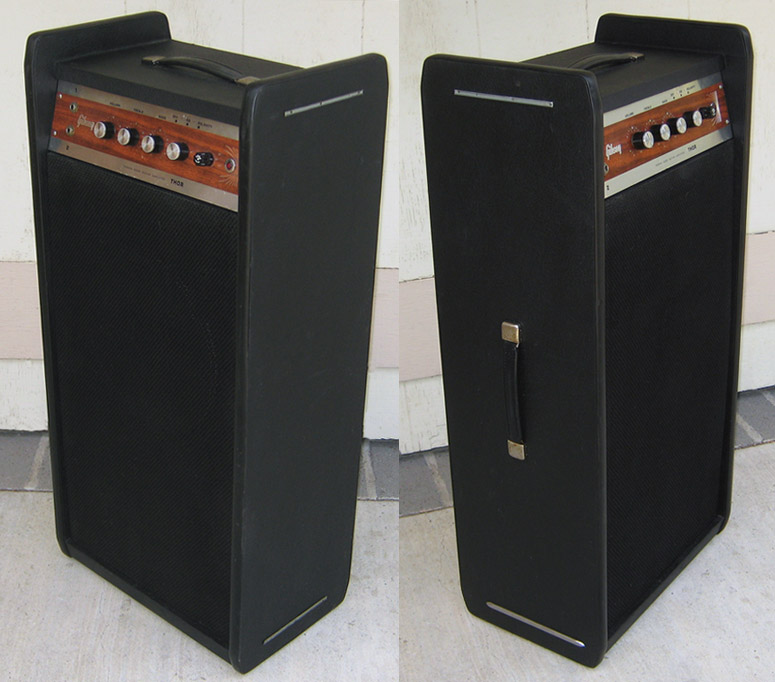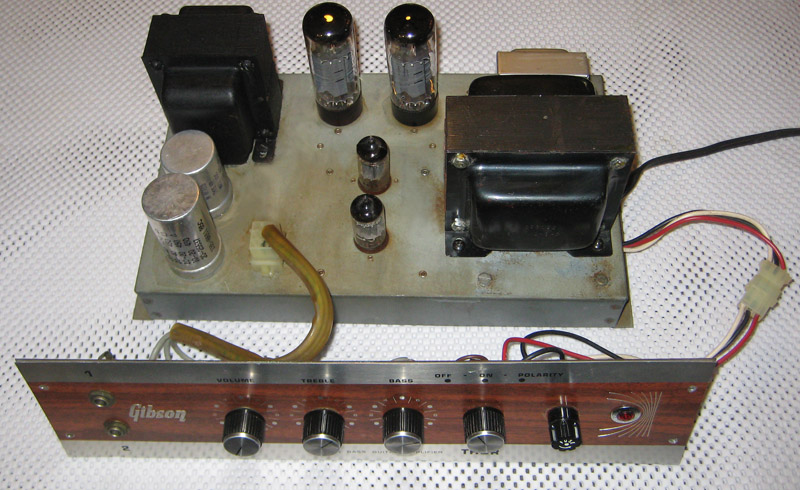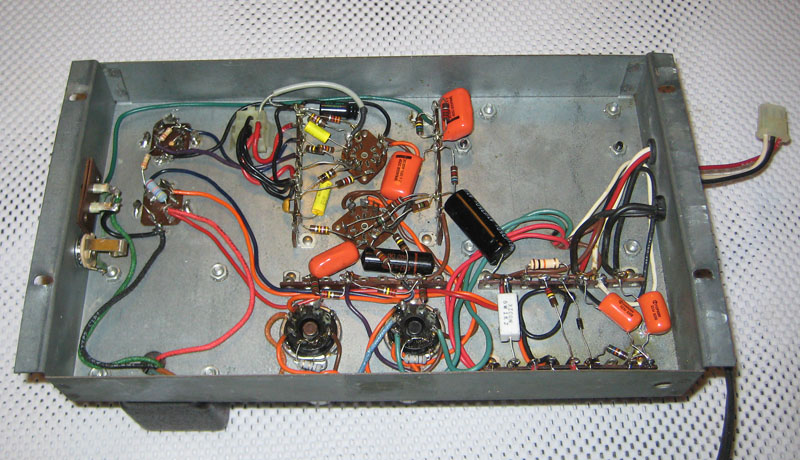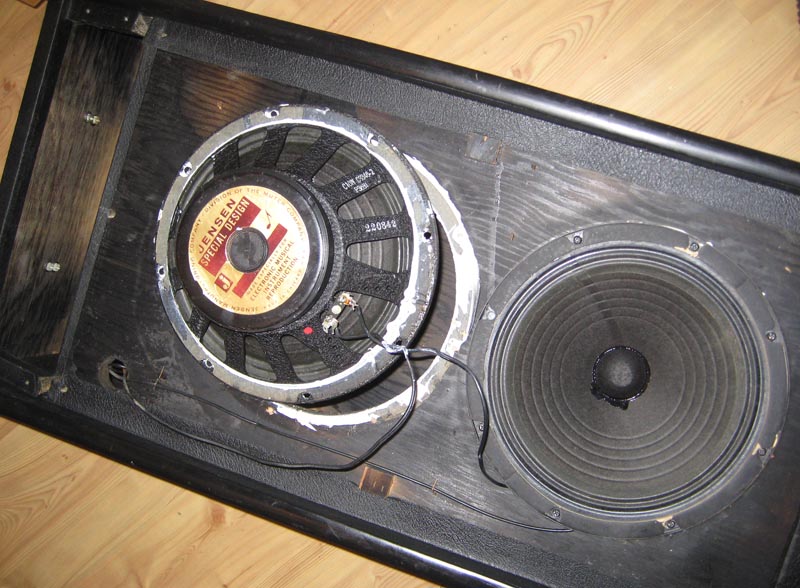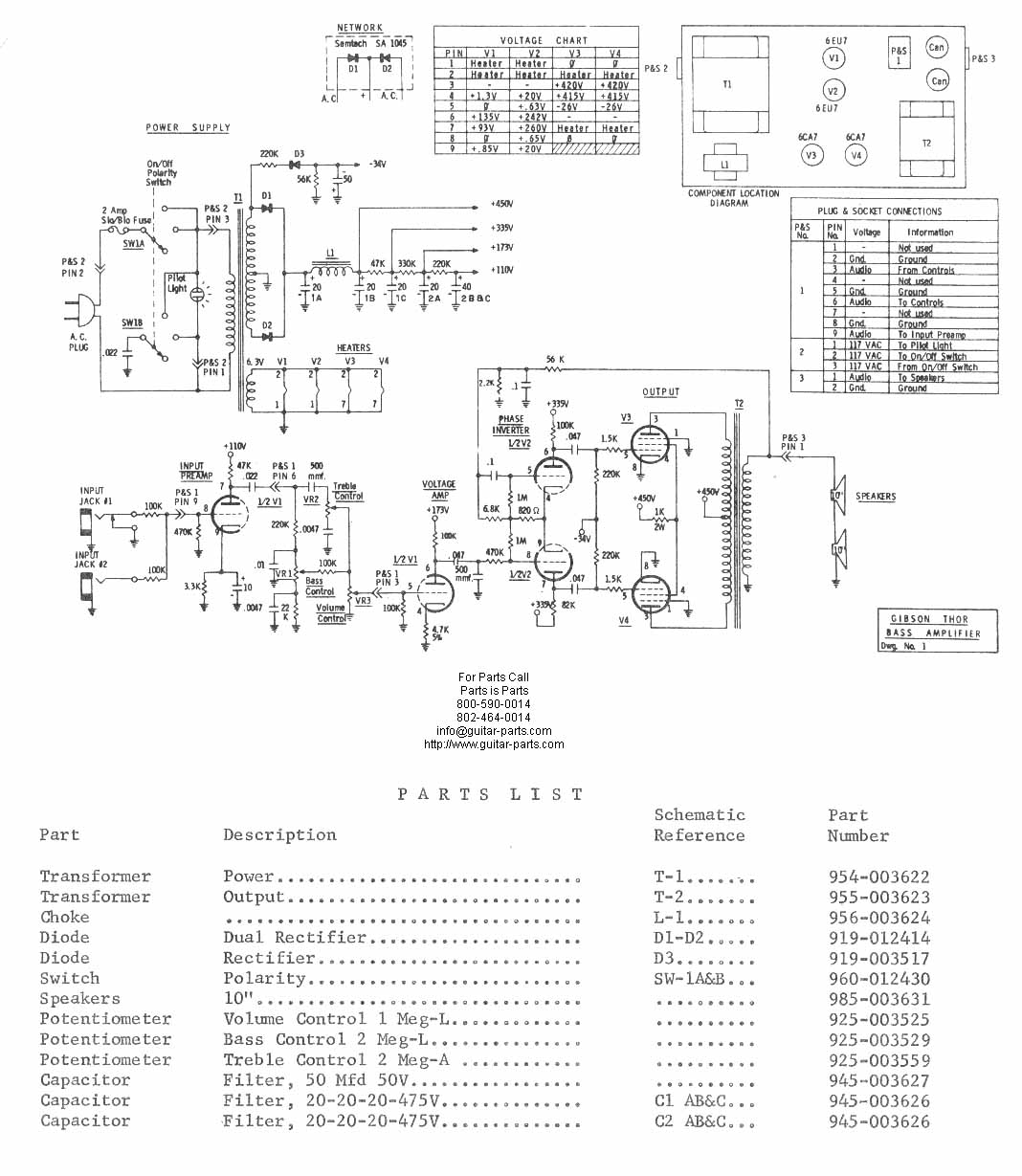This vintage Gibson THOR is a 100% tube point to point, hand wired 50 watt bass amp combo with two 10" speakers.
They only made them for a few years (including the tube and the later solid state versions).
Here's some info on this obscure, and actually quite rare, amplifier.
I've had this amp in strorage for more than 20 years and finally decided to go completely through it. Upon inspection, I found that it needed a new power transformer as well as a choke. And as long as I was in there, I also replaced the two main filter multicaps, the bias capacitor, a couple of coupling caps and resistors as well as any other necessary components to bring it back up to the factory specifications. The amp uses two 6EU7 preamp and driver tubes and a pair of 6CA7 (or EL34) output tubes. As per the schematic, the plate voltage is 420 volts, so I installed a Fender power transformer from a Super 60 amp that I had in my inventory. The Fender tranny is larger and puts out approx 450V on the B+ voltage so it worked out perfectly. It also has a seperate bias tap instead of using one side ot the B+ supply which made it more convenient for me to set up the bias voltage.
I installed two NOS Mullard 6EU7's, and a pair of matched vintage Tesla EL34's (not the resisues) output tubes that were tested to spec as new on my Maxi-Matcher output tube tester. Once I set the bias to get the EL34's to pull 35 ma at idle, I plugged my bass into it for testing, and viola, she works perfect! The orignal speakers are a pair of Jensen C10N (date coded 1968) with their original cones and they sound great in this amp. Vintage Jensen C10N's are now selling for $130.00 each, and after hearing them, I understand why. I put the amp on my scope and tested its actual output wattage with a signal generator. Using a Compu-Bias with the wattage probe the amp puts out 50 watts RMS (exact factory spec) with no distortion. Of course, it'll put out considerably more with distortion (as all tube amps do).
Its simple control panel consists of two 1/4" inputs, volume, treble, bass, power (with line reverse), a fuse post and panel light. Surprisingly, with such few controls, this amp actually is capable of a fairly wide range of tones. If you turn down the bass and treble controls it can get a very cool midrange growl. And at the other extreme, with the treble and bass set at the maximum, it gets a lot of warm and full low end with crisp yet smooth highs.
I have also come to find out that Gibson also issued another form of this amp known as the Kalamazoo "Bass 50". It was also a rare combo but had its speakers aligned horizontally. It had a rear "flip-out" panel for the controls. I think the this THOR is pretty darn cool. It has that late 60's styling (like the Gibson Medalist amps, and its front panel reminds me of my parent's '68 Ford LTD with its walnut trimmed dashboard (when I was 15!). It makes a great practice and recording amp and it could also be used for small gigs that don't require a high powered bass rig.
The cabinet is a fully sealed enclosure with the chasssis' mounted up top. The power amp chassis is somewhat tricky to remove with is four mounting bolts in tight places. To view the amps' schematic and specs, scroll down to the bottom of this page.
